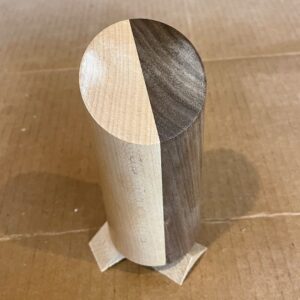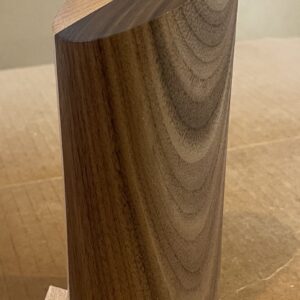This post comprises both a lesson-learned followed by a question. I used AquaCoat clear grain filler on this little piece of maple/walnut. I sanded to 220 on the sides and 320 on the end grain. It was baby butt smooth. I thoroughly cleaned away the dust with air and wiping down with mineral spirits and then let it thoroughly dry.
But after spraying with lacquer I noticed some white blobs on the tops, clearly visible in the first photo. Several more coats of lacquer and sanding to 400 grit did nothing. So, I gave up and sanded down to the wood and recoated with lacquer. The improvement is clearly visible, but now I could see faint cloudiness in the walnut face grain along the side. By this point, I concluded that I messed up using the grain filler, resanded down to remove the filler, and resprayed. It is not longer baby butt smooth, but the wood looks like it should – deep and rich.
Thus, my question: How can I used grain filler without resulting in the white cloudiness? I presume that there are techniques or products that will fill grain and still retain the wood’s natural color.


















Replies
Looks like the spray laquer blushed when it was applied. It might not have anything tl do with the filler. Happens when temp and humidity are out of range.
I think you may have the correct analysis. Lacquer is, as you say, sensitive to moisture and temperature ranges. Just one of the "Joys" of building and repairing stringed musical instruments. (Its ability to not color, or muddy the tone created by the vibration within the wood is what makes it all worthwhile.)
I've had a similar experience when using grain filler on walnut. White streaks are impossible to get out unless you sand down to bare wood. I'll never use the stuff again. Maybe others have better luck?
I don't like filler. If I want the pores to disappear,I sand, record, sand, record until the pores are filled. You can do a lot of coats of shellac in a day.
This forum post is now archived. Commenting has been disabled